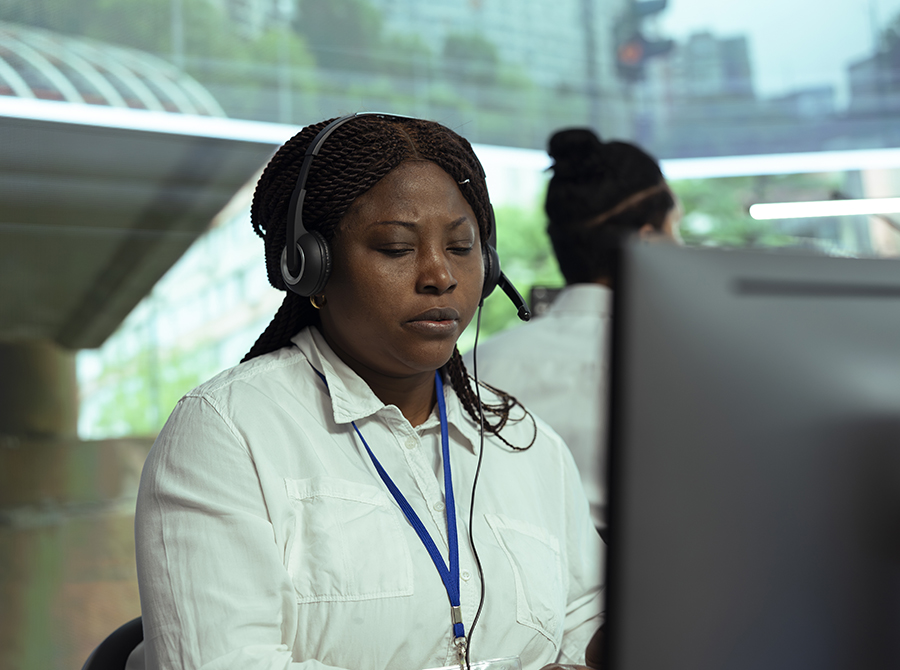What Is Secondary Trauma?
Trauma is an intense emotional response to unexpected and highly distressing events. While many people recover naturally over time, some experience prolonged distress, leading to conditions like post-traumatic stress disorder (PTSD) or secondary trauma.
Secondary trauma occurs when someone is indirectly affected by another person’s traumatic experience. This could happen to a family member, friend, or professionals like first responders who interact with trauma victims regularly. Exposure can occur through direct interaction, hearing about the event, or even viewing images or processing scenes. Helping professionals, particularly in public safety and healthcare, face a higher risk due to the repeated exposure their jobs demand.
Types of Secondary Trauma
- Secondary Traumatic Stress: Symptoms mirror PTSD, including emotional distress and recurring disturbing memories, but are triggered through victim contact rather than direct exposure.
- Compassion Fatigue: A combination of PTSD symptoms and burnout.
- Burnout: Chronic mental and physical exhaustion from occupational stress, leading to cynicism, detachment, and reduced effectiveness.
- Vicarious Trauma: Gradual negative shifts in perspective, that affect the sense of trust, safety, and personal relationships.
- Risk Factors: Repeated trauma exposure, lack of support, high workloads, insufficient mental health resources, and personal trauma history.
Risk Factors
First responders, including 911 telecommunicators, are at heightened risk for secondary trauma due to the nature of their work. For telecommunicators, trauma often stems from exposure to distressing phone calls or radio transmissions.
Research indicates that while not everyone will develop PTSD or secondary trauma, a significant portion of 911 personnel may be affected. For example, studies have shown that 16.3% to 17% of telecommunicators report symptoms severe enough to meet diagnostic criteria.
Common Risk Factors for 911 Personnel:
- Years of experience and cumulative exposure.
- Insufficient staffing and long hours.
- Overtime and workload pressures.
- Calls involving death, serious injury, or children are especially distressing.
Protective Measures:
- Supportive management.
- Manageable work hours.
- Job satisfaction.
- Regular self-care
- Professional work boundaries.
Practical Tips for 911 Telecommunicators
- Prioritize Self-Care:
- Exercise regularly, maintain a healthy diet, and nurture hobbies and relationships.
- Set specific goals, such as scheduling three workouts weekly, and stick to them.
- Monitor Your Health:
- Schedule regular check-ups to keep tabs on your mental and physical well-being.
- Process Difficult Calls:
- Use tools like journaling or talking with peers or therapists to reflect on challenging moments.
- After distressing calls, take a break, step outside, and practice deep breathing or grounding techniques.
- Recognize the Signs:
- Watch for symptoms of trauma, such as mood changes or intrusive thoughts.
- Seek help if symptoms persist for more than 1-2 weeks or escalate to thoughts of self-harm.
- Utilize Resources:
- Engage in peer support groups or counseling offered by your department.
Building Resilience Against Secondary Trauma
By practicing self-care, maintaining boundaries, and seeking support when needed, 911 telecommunicators can build resilience against secondary trauma. Remember, you are not alone—resources and support systems are available to help you navigate these challenges.
Your mental health is essential, not only for your well-being but also for your ability to serve your community effectively. Take time to care for yourself, and don’t hesitate to reach out for support when needed.
This article was written by Dr. Stella Benami, a licensed clinical psychologist with extensive experience in mental health and substance abuse treatment. Dr. Benami has a strong passion for police, military, and public safety psychology. Before earning her doctorate, she worked as a public safety dispatcher for nearly seven years. This hands-on experience, combined with her clinical background, gave her a deep understanding of the unique challenges faced by helping professionals. It also inspired her to conduct an in-depth empirical study on secondary traumatization among 911 dispatchers, which became the focus of her dissertation project.
At Police Legal Sciences, we strive to go beyond the technical aspects of dispatcher training to focus on dispatcher wellness. We have partnered with Dr. Benami to provide articles and actionable techniques to help manage the emotional toll of the job. From strategies for processing difficult calls to self-care tips and recognizing signs of secondary trauma, our lessons empower dispatchers to navigate their challenging roles with confidence and maintain their mental well-being.
Invest in yourself and your team with training that supports both professional excellence and personal resilience.
By: Stella Benami PsyD, Licensed Clinical Psychologist

